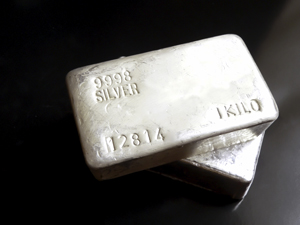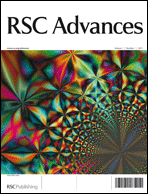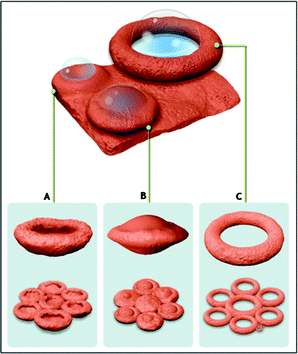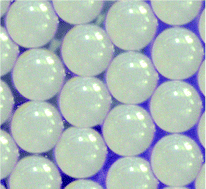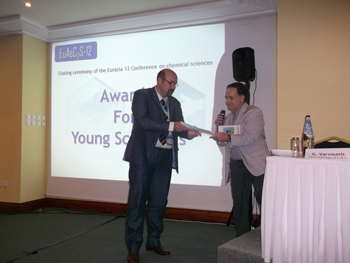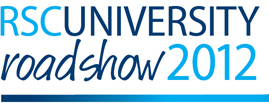 RSC Advances is one year old. You can join our first anniversary celebrations at the EuCheMs meeting in Prague, on Tuesday 28th August 2012, at 17.00-18.30. Please contact the RSC Advances Editorial Office if you wish to attend.
RSC Advances is one year old. You can join our first anniversary celebrations at the EuCheMs meeting in Prague, on Tuesday 28th August 2012, at 17.00-18.30. Please contact the RSC Advances Editorial Office if you wish to attend.
In the last 12 months, the journal has published 27 issues containing over 1200 articles across all of the chemical sciences, including: analytical, biological, catalysis, chemical biology and medicinal, energy, environmental, food, inorganic, materials, nanoscience, organic, physical. Our innovative and sophisticated classification system ensures that all the articles are visibible within and/or between one or more of the above twelve subject categories featured on the RSC Advances website. All articles published in 2011 and 2012 are free to download*.
By publishing with RSC Advances, authors are benefiting from:
- Rapid publication times
- High visibility
- Open-access options via RSC Open Science
- Free electronic reprints (pdf) of own paper
- Free use of colour
- No page charges
- No page limits
Some of the most cited and/or downloaded articles are:

Electrochemistry of graphene: not such a beneficial electrode material?
Brownson, Dale A. C.; Munro, Lindsey J.; Kampouris, Dimitrios K.; et al.
RSC ADVANCES 2011 Pages: 978-988 DOI: 10.1039/c1ra00393c
Homogeneous and heterogeneous catalysts for multicomponent reactions
Maria José Climent, Avelino Corma and Sara Iborra
RSC ADVANCES 2012 Pages: 16-58 DOI: 10.1039/C1RA00807B
CO2 chemistry: task-specific ionic liquids for CO2 capture/activation and subsequent conversion
Yang, Zhen-Zhen; Zhao, Ya-Nan; He, Liang-Nian
RSC ADVANCES 2011 Pages: 545-567 DOI: 10.1039/c1ra00307k
Glutathione: mechanism and kinetics of its non-enzymatic defense action against free radicals
Galano, Annia; Raul Alvarez-Idaboy, J.
RSC ADVANCES 2011 Pages: 1763-1771 DOI: 10.1039/c1ra00474c
Graphene-based photocatalytic composites
An, Xiaoqiang; Yu, Jimmy C.
RSC ADVANCES 2011 Pages: 1426-1434 DOI: 10.1039/c1ra00382h
A novel application of porphyrin nanoparticles as an effective fluorescent assay platform for nucleic acid detection
Author(s): Zhai, Junfeng; Li, Hailong; Sun, Xuping
Source: RSC ADVANCES 2011 Pages: 36-39 DOI: 10.1039/c1ra00026h
Recent developments in solvent-free multicomponent reactions: a perfect synergy for eco-compatible organic synthesis
Maya Shankar Singh and Sushobhan Chowdhury
RSC ADVANCES 2012 Pages: 4547-4592 DOI: 10.1039/C2RA01056A
Long term cycling studies of electrospun TiO2 nanostructures and their composites with MWCNTs for rechargeable Li-ion batteries
Zhu, Peining; Wu, Yongzhi; Reddy, M. V.; et al.
RSC ADVANCES 2012 Pages: 531-537 DOI: 10.1039/c1ra00514f
Transition metal complexes with strong absorption of visible light and long-lived triplet excited states: from molecular design to applications
Zhao, Jianzhang; Ji, Shaomin; Wu, Wanhua; et al.
RSC ADVANCES 2012 Pages: 1712-1728 DOI: 10.1039/c1ra00665g
Cucurbituril chemistry: a tale of supramolecular success
Masson, Eric; Ling, Xiaoxi; Joseph, Roymon; et al.
RSC ADVANCES 2012 Pages: 1213-1247 DOI: 10.1039/c1ra00768h
Graphene-inorganic nanocomposites
Bai, Song; Shen, Xiaoping
RSC ADVANCES 2012 Pages: 64-98 DOI: 10.1039/c1ra00260k
Bioaugmentation of an electrochemically active strain to enhance the electron discharge of mixed culture: process evaluation through electro-kinetic analysis
Raghavulu, S. Veer; Babu, P. Suresh; Goud, R. Kannaiah; et al.
RSC ADVANCES 2012 Pages: 677-688 DOI: 10.1039/c1ra00540e
*All articles published in 2011-2012 are free to download after a simple login/registration process.











